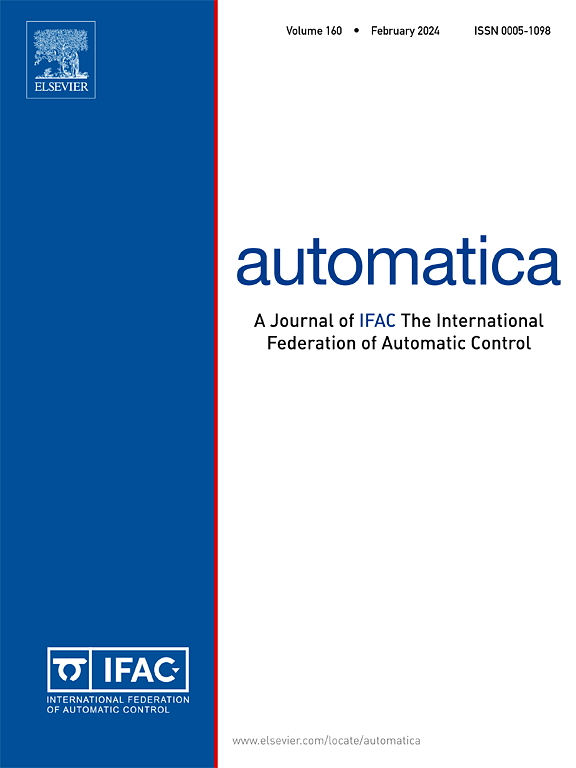Distributed fault-tolerant control of multi-UAV formation for dynamic leader tracking: A Lyapunov-based MPC framework
IF 5.9
2区 计算机科学
Q1 AUTOMATION & CONTROL SYSTEMS
引用次数: 0
Abstract
This paper focuses on the formation tracking control problem of multiple unmanned aerial vehicles (UAVs) interconnected through a directed communication graph. The objective is to ensure that the vehicles attain a predetermined geometric configuration while simultaneously tracking a dynamic virtual leader in the presence of unexpected actuator faults. A novel distributed model predictive control (MPC) framework is proposed, where each UAV is equipped with an individual controller that adopts a hierarchical architecture comprising three sequentially connected control layers. The outer layer, integrating the Lyapunov-based MPC method with an adaptive parameter estimator, determines translation tracking control actions. The intermediate layer enforces the convergence of actual rotation angles toward the desired ones determined by the outer layer. The inner layer generates the torque control commands for rapid convergence of the angular velocities. The closed-loop stability of the entire multi-UAV system is rigorously analyzed, and sufficient conditions regarding the selection of user-defined parameters are established. Simulation results are provided to demonstrate the effectiveness of the proposed design.
基于lyapunov的MPC框架的多无人机编队动态leader跟踪分布式容错控制
研究了多架无人机通过有向通信图互联的编队跟踪控制问题。目标是确保车辆达到预定的几何配置,同时在执行器出现意外故障时跟踪动态虚拟领导者。提出了一种新的分布式模型预测控制(MPC)框架,其中每架无人机配备一个单独的控制器,该控制器采用由三个顺序连接的控制层组成的分层结构。外层集成了基于lyapunov的MPC方法和自适应参数估计器,确定了平移跟踪控制动作。中间层使实际旋转角度向外层确定的所需角度收敛。内层为角速度的快速收敛生成转矩控制命令。严格分析了整个多无人机系统的闭环稳定性,建立了自定义参数选择的充分条件。仿真结果验证了该设计的有效性。
本文章由计算机程序翻译,如有差异,请以英文原文为准。
求助全文
约1分钟内获得全文
求助全文
来源期刊

Automatica
工程技术-工程:电子与电气
CiteScore
10.70
自引率
7.80%
发文量
617
审稿时长
5 months
期刊介绍:
Automatica is a leading archival publication in the field of systems and control. The field encompasses today a broad set of areas and topics, and is thriving not only within itself but also in terms of its impact on other fields, such as communications, computers, biology, energy and economics. Since its inception in 1963, Automatica has kept abreast with the evolution of the field over the years, and has emerged as a leading publication driving the trends in the field.
After being founded in 1963, Automatica became a journal of the International Federation of Automatic Control (IFAC) in 1969. It features a characteristic blend of theoretical and applied papers of archival, lasting value, reporting cutting edge research results by authors across the globe. It features articles in distinct categories, including regular, brief and survey papers, technical communiqués, correspondence items, as well as reviews on published books of interest to the readership. It occasionally publishes special issues on emerging new topics or established mature topics of interest to a broad audience.
Automatica solicits original high-quality contributions in all the categories listed above, and in all areas of systems and control interpreted in a broad sense and evolving constantly. They may be submitted directly to a subject editor or to the Editor-in-Chief if not sure about the subject area. Editorial procedures in place assure careful, fair, and prompt handling of all submitted articles. Accepted papers appear in the journal in the shortest time feasible given production time constraints.
 求助内容:
求助内容: 应助结果提醒方式:
应助结果提醒方式:


